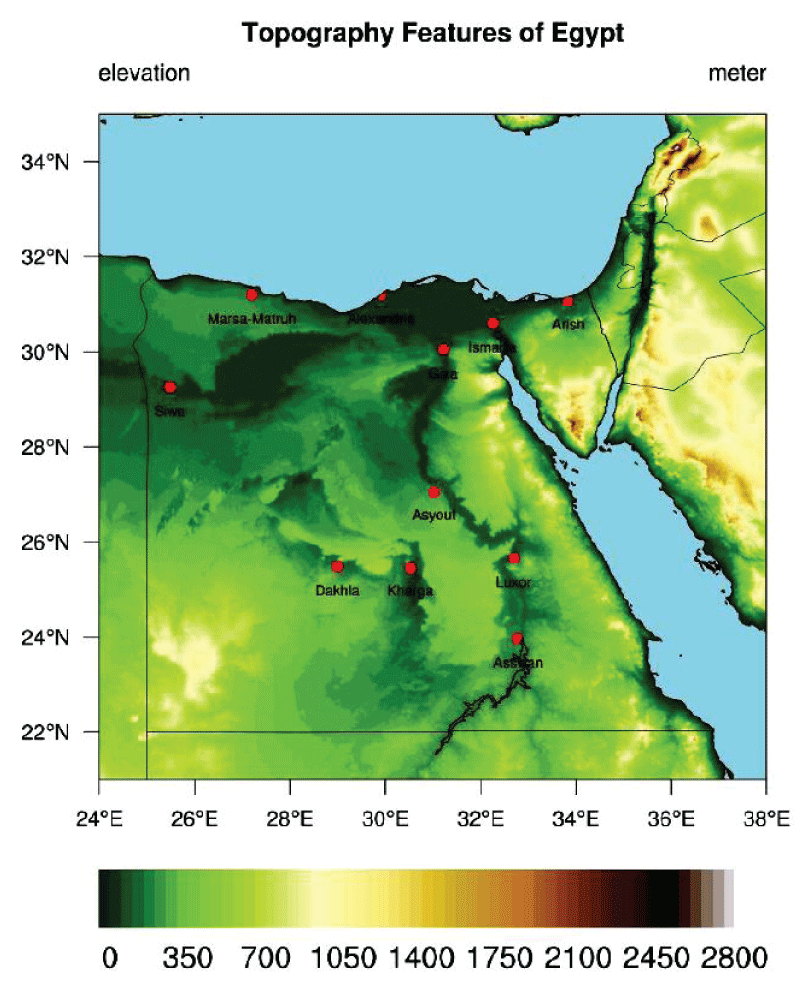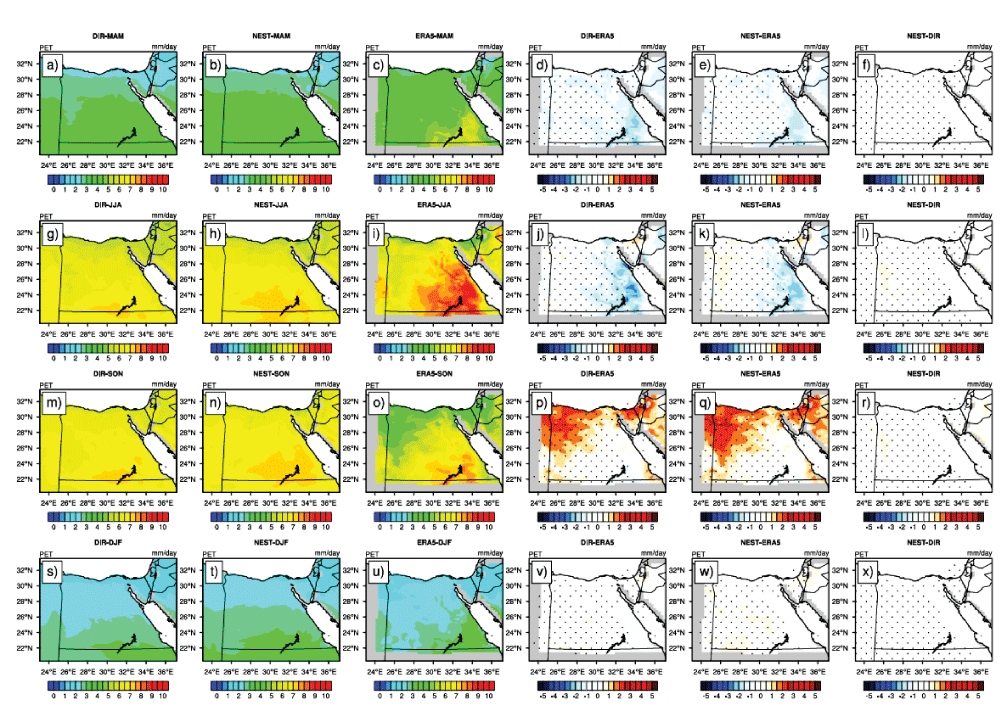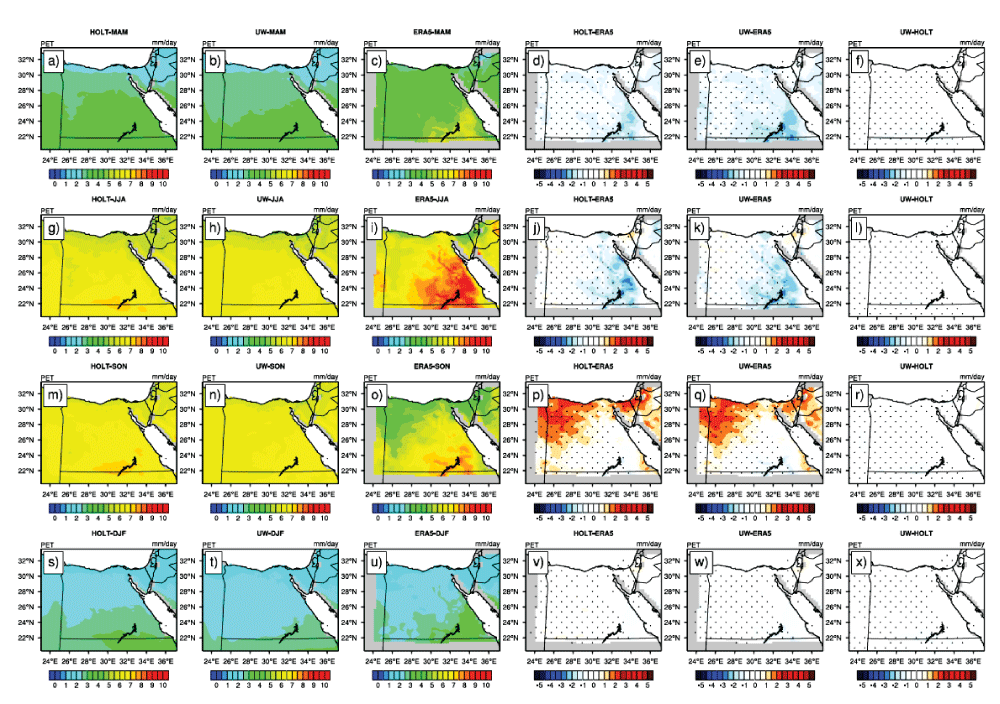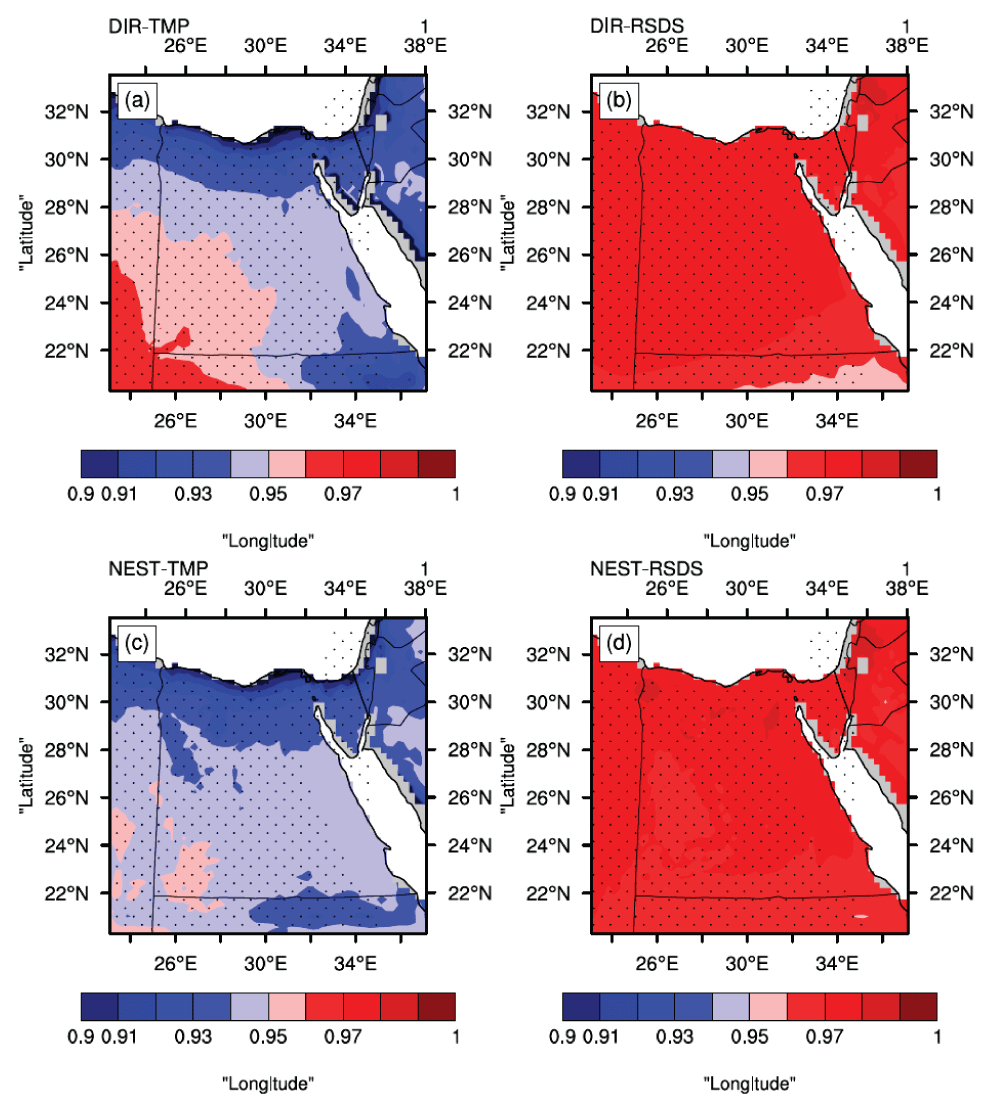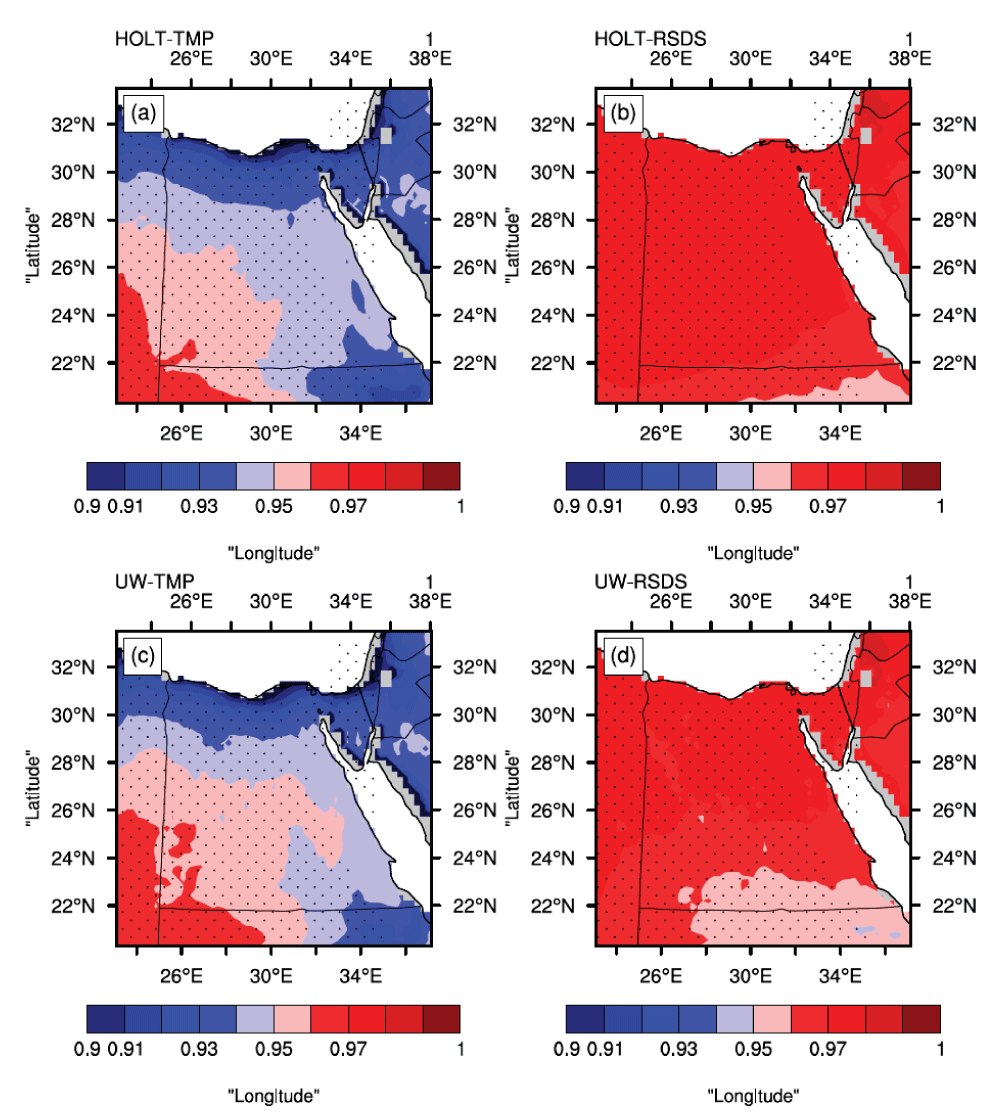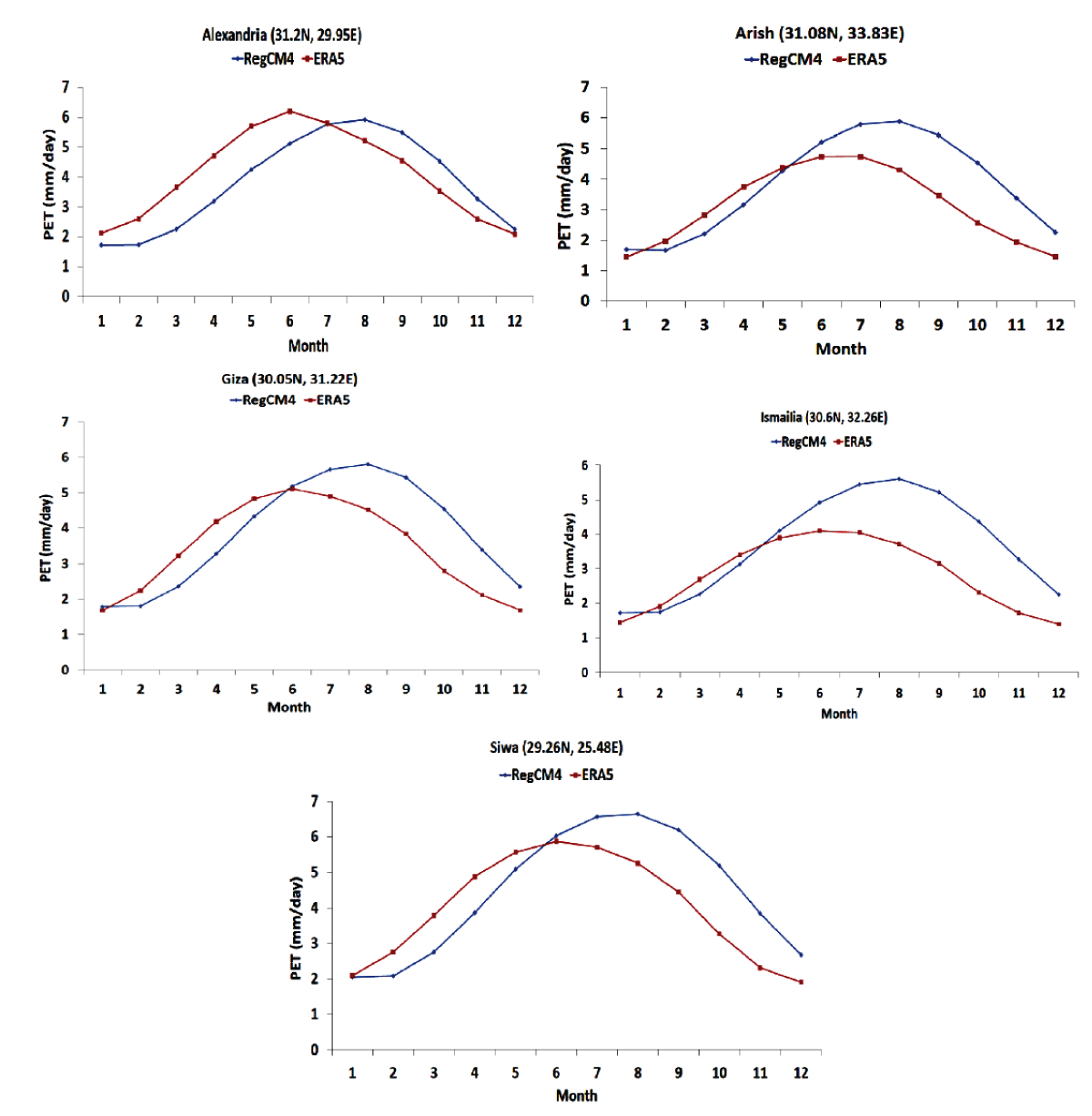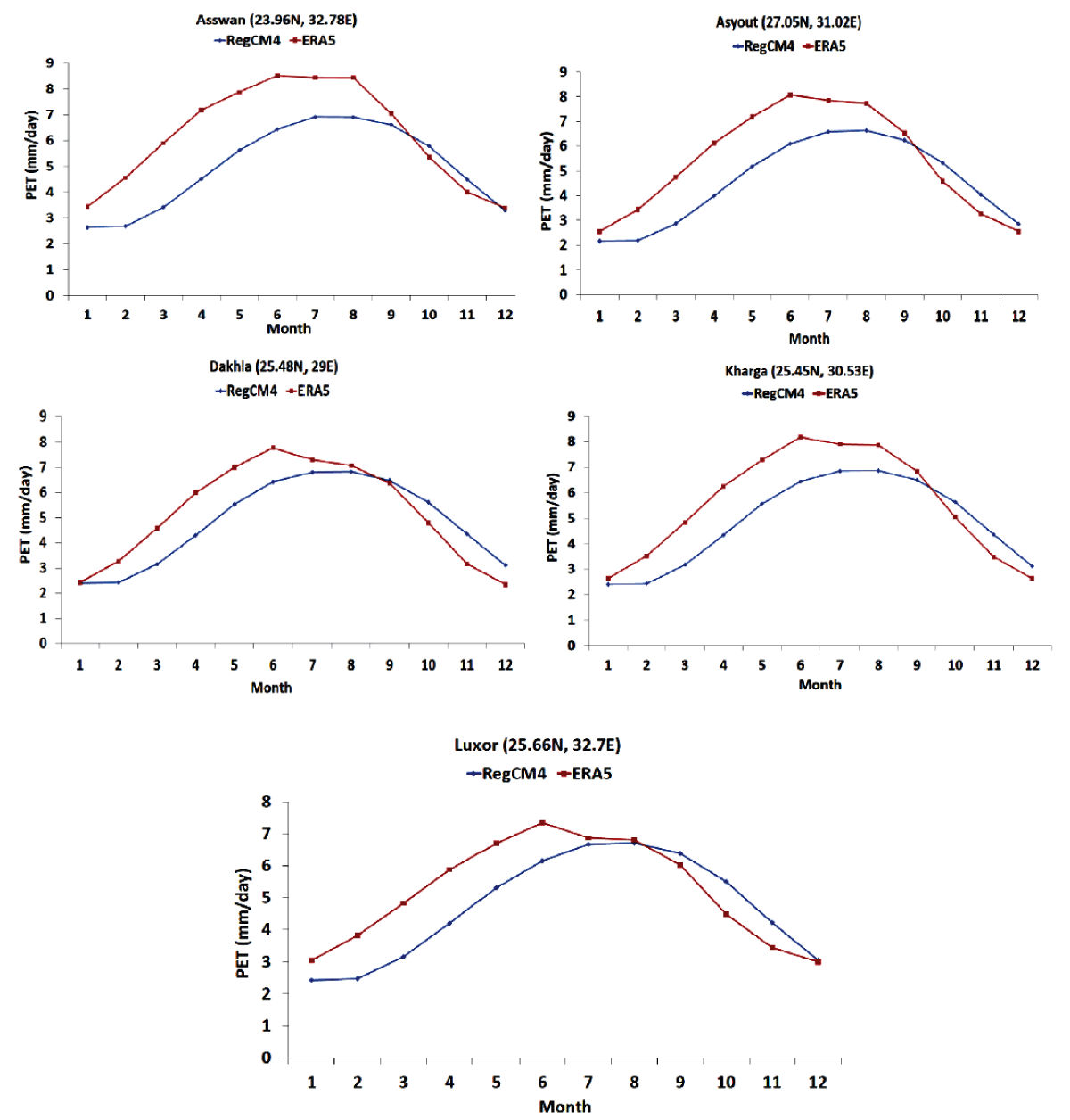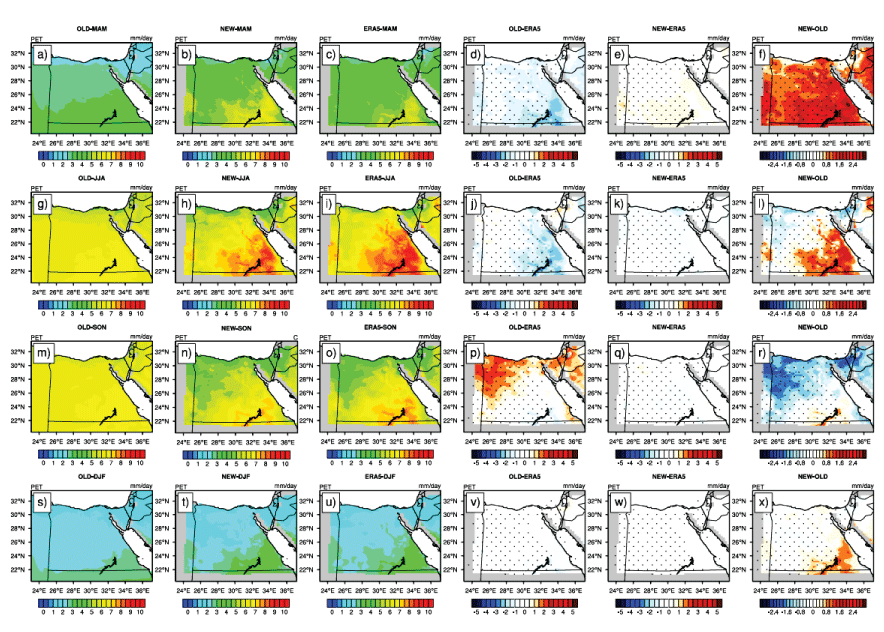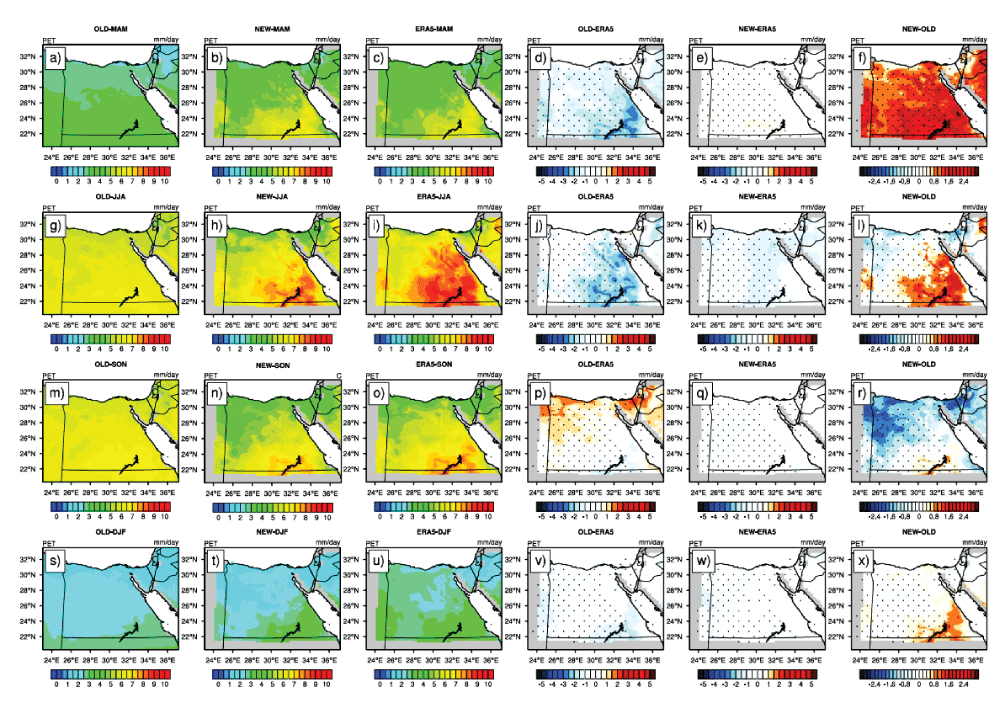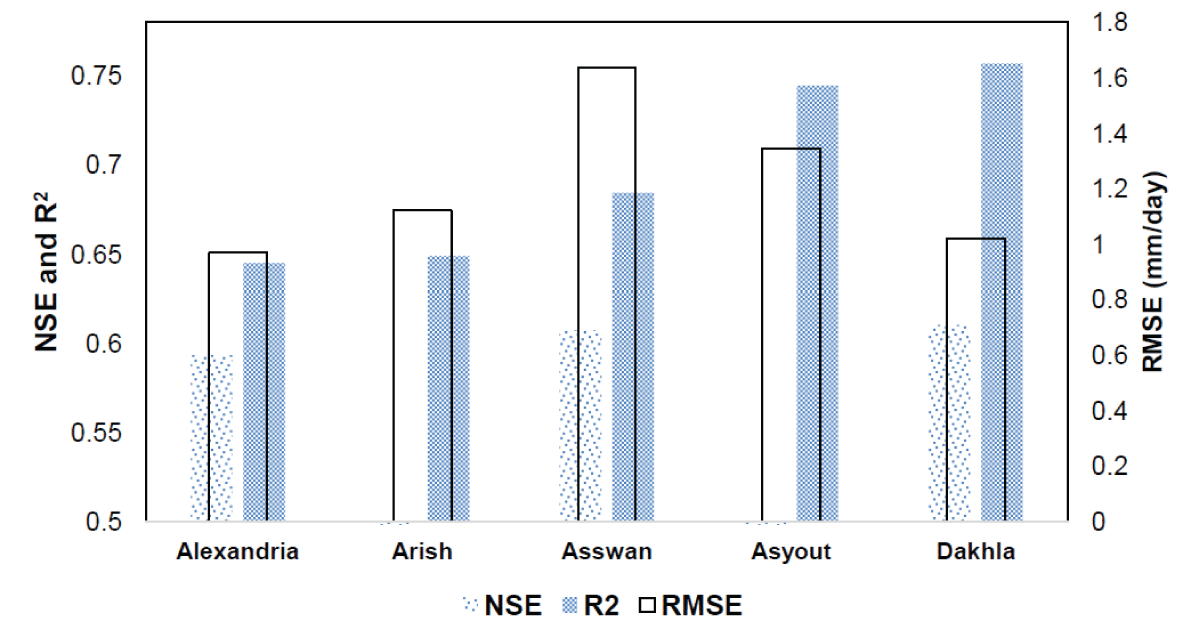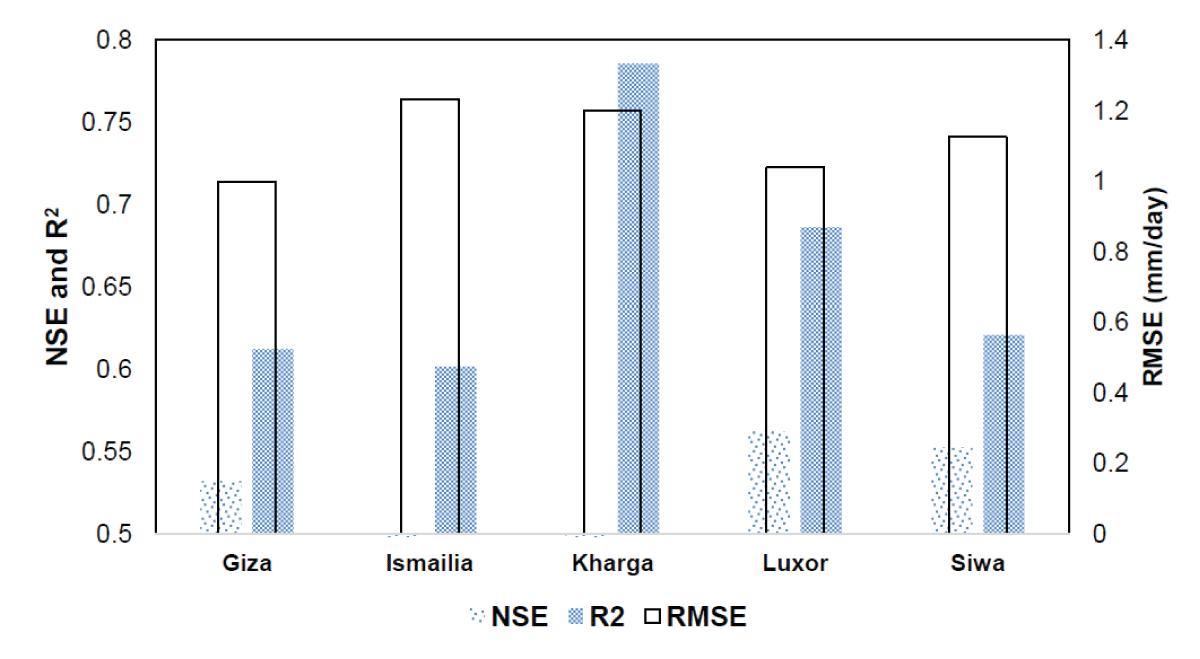要約
Potential Evapotranspiration (PET) is an important variable for monitoring daily agricultural activity as well as meteorological drought. Therefore, it is necessary to investigate the influence of different options of the physical dynamical downscaling and boundary layer schemes on the simulated PET. Using the RegCM4 regional climate model, four simulations were conducted (two for each case) in the period 1997 to 2017. In all simulations, the RegCM4 was configured with 25 km resolution and downscaled by the ERA-Interim reanalysis dataset. To ensure a reliable estimation of the PET, a calibrated version of the Hargreaves-Samani equation was adopted. A high-resolution product of the ERA5 was used as the observational dataset. Results showed that the simulated PET is insensitive either to the dynamical downscaling or the boundary layer options. Concerning the annual climatological cycle, the RegCM4’s performance varies with month and location. Quantitatively, a root mean square error lies between 1 mm and 1.6 mm day-1, the Nash-Sutcliffe efficiency between 0.2 and 0.6, and the coefficient of determination between 0.5 and 0.75. Additionally, the Linear Scaling (LS) method showed its added value in the evaluation/validation periods. In conclusion, the RegCM4 can be used to develop a regional PET map of Egypt using the LS either in the present climate or under different future scenarios.




